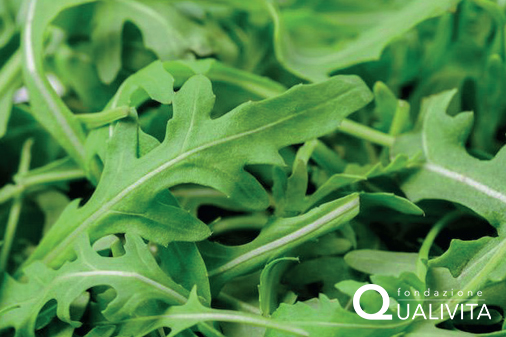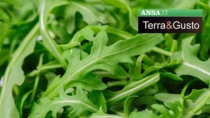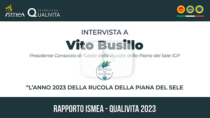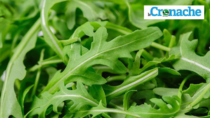Description
Rucola della Piana del Sele PGI is a fresh green vegetable with narrow leaves belonging to the family Brassicaceae, species Diplotaxis tenuifolia L. DC. (commonly known as wild Arugula).
Production Area
The production area of Rucola della Piana del Sele PGI is within the municipalities of Battipaglia, Bellizzi, Eboli, Pontecagnano-Faiano, Giffoni Valle Piana, Montecorvino Pugliano, Montecorvino Rovella and Capaccio-Paestum in the province of Salerno, in the Campania region.
Production Method
Rucola della Piana del Sele PGI is cultivated in unheated tunnels or multi-tunnels, covered with plastic film for the sole purpose of protecting the crop from hail and excessive rainfall that could cause water stagnation. In the spring and summer it can also be grown in the open field or under protective nets. Rucola della Piana del Sele PGI cannot be grown above ground. Certified GMO-free seeds are used and they are sown with precision seeding machines. The "spray" technique, otherwise known as "sprinkling", is used for irrigation, which is limited to specific stages in the growing process: the first time is immediately after sowing, to ensure germination, and the second once germination has taken place. The plants are watered after each harvest to promote regrowth. The product is harvested when the leaves have reached a length of 8-25 cm. Depending on the period, the number of harvests can vary from 1 to 10, with a total production, per cut, of 6000 kg of arugula per hectare. Harvesting is carried out with special harvesters or manually with a special scythe. Immediately after harvesting, the product must be placed in boxes and put in cells suitable for cooling, or in a refrigerated truck at a temperature between 2 and 6 °C, after which the fresh product is prepared to be put on the market, or packed for fourth range processing.
Appearance and Flavour
The leaves of Rucola della Piana del Sele PGI are 2-5 cm wide and 8-25 cm long; they are pinnatifid, pinnatisect, or pinnatilobate, with narrow, denticulate lobes that are up to 4 cm long. The surface is green, glabrous and glaucous-dull. The tip is elongated-trefoil and the upper leaves, if present, are composed of narrow segments. It is crunchy with an intense and penetrating piquant and spicy aroma, with an accentuated note of sapidity.
History
The first historical references to the cultivation of arugula on the Piana del Sele date back to the Middle Ages, and are found in medical works attributed to the Salerno Medical School and, in particular, to Constantine the African (1025-1087), a Carthaginian physician who arrived in Salerno in 1077. The importance of this production was confirmed over the following centuries, with its wide-spread diffusion starting in the 1980s.
Gastronomy
Rucola della Piana del Sele PGI must be kept in a cool, dry place, away from light and heat sources. Precisely because of its typicality, the product has become an ingredient in numerous culinary recipes, from starters to side dishes. It is also excellent for making a specific liqueur called Rucoletta, made specifically with an infusion of Rucola della Piana del Sele PGI.
Marketing
The product is marketed as Rucola della Piana del Sele PGI. It is sold fresh in net bags or sealed containers such as trays, bags, trays, crates, with or without a protected atmosphere. The containers can be made of plastic, wood, cardboard or any other material considered suitable for food use. As a fourth range product, it can be sold ready for consumption in special packaging. The product cannot be sold loose.
Distinctive Features
Rucola della Piana del Sele PGI is characterised by a piquant and spicy aroma that is particularly intense and penetrating, with an accentuated note of sapidity that often makes it unnecessary to use salt in the seasoning.
















